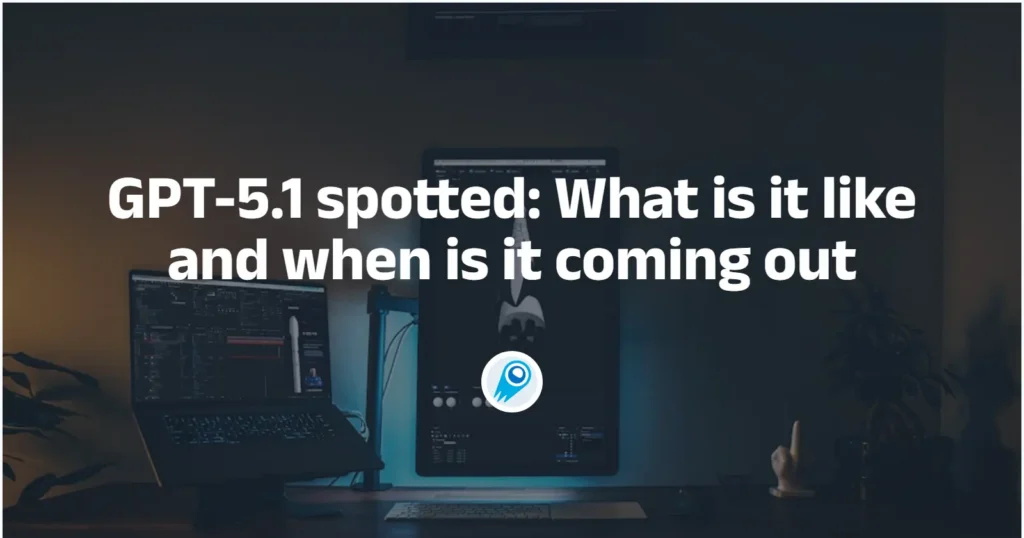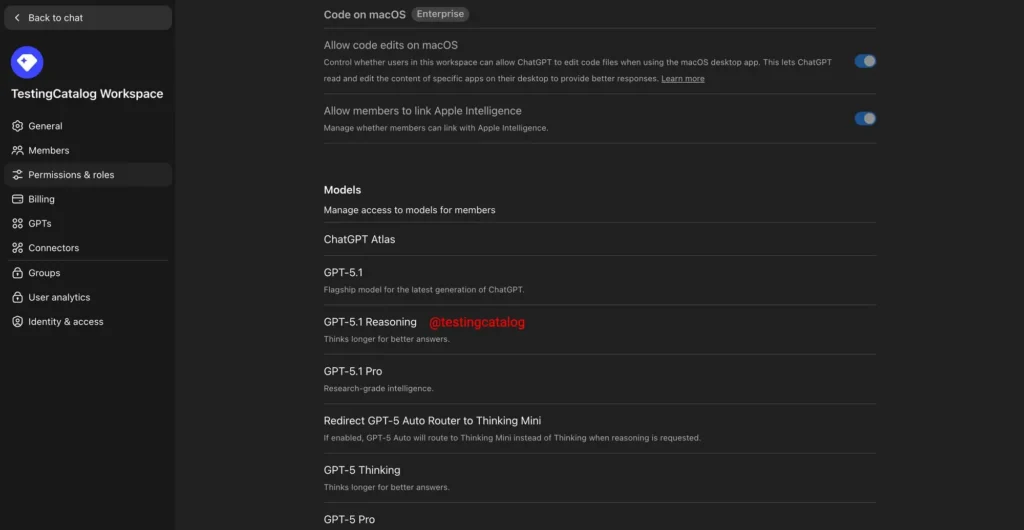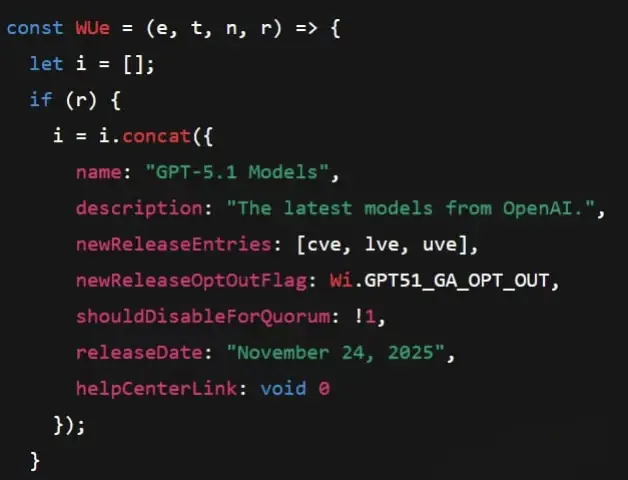GPT-5.1 spotted: What is it like and when is it coming out

By the end of 2025, the competition in AI models will intensify. The upcoming releases of GPT 5.1 and Gemini 3.0 Pro are undoubtedly a major focus. The looming releases are both a signal of competition and a marketing tactic for companies to preemptively seize market share. Gemini 3.0 has released code signals on Vertex: gemini-3-pro-preview-11-2025 indicating that it is already partially usable(How to get started with the Gemini 3 Pro Preview). Now let’s examine what GPT-5.1 will bring developers.
OpenAI’s model train keeps moving fast. Over the past few days a stream of small but consistent signals — code artifacts in third-party repos, model names visible in provider lists, and investigator write-ups — have pointed to a next step in the GPT-5 era: a GPT-5.1 family that includes a flagship GPT-5.1, a specialized “Reasoning” variant, and a more powerful GPT-5.1 Pro. The leaks and sightings are patchy and unofficial, but together they sketch a plausible product family and a tight timetable. Below I collect what’s known, evaluate the credibility of each signal, and compare the likely capabilities of GPT-5.1 to Google’s Gemini 3 line.
What is GPT-5.1 (and GPT-5.1 Pro)?
What does the “5.1” suffix mean in OpenAI’s naming?
OpenAI has used minor version bumps (e.g., GPT-4 → GPT-4.1) to denote iterative improvements: updates that refine reasoning, latency, or capability while preserving the overall architecture and product surface. A “5.1” label therefore suggests an incremental-major release: not a full re-architecting from scratch, but an evolution of GPT-5’s core design with targeted improvements — typically in reasoning, instruction-following, latency, or context handling. OpenAI’s own public descriptions of the GPT-5 family emphasize multi-variant strategies (fast/cheap vs deep-reasoning vs research/pro), and the 5.1 naming fits into that pattern.
What are GPT-5.1, GPT-5.1 Reasoning and GPT-5.1 Pro?
Based on leaked identifiers and short descriptions surfaced in code fragments and Openrouter, the family appears to include:
- GPT-5.1 (base / flagship) — the standard, broadly useful engine for ChatGPT; a drop-in successor to GPT-5 intended to lift general answer quality and instruction-following.
- GPT-5.1 Reasoning — a variant explicitly described as “thinks longer for better answers” or similar phrasing in leak artifacts; likely tuned (or routed at runtime) to prioritize multi-step, chain-of-thought style reasoning and improved stepwise correctness.
- GPT-5.1 Pro — a higher-capability configuration targeted at power users and enterprises; leaks and reporting suggest an enterprise billing tier and extra capability set (e.g., larger context windows, higher throughput or stricter accuracy targets). Its premium subscription tied to Pro access.
What sets GPT-5.1 apart (based on leaks)
- Think-mode: explicit “thinking” budgets (i.e., slower, deeper reasoning) rather than just faster responses.
- Extended context windows (256 K tokens or more) and possibly better long‐document comprehension.
- Higher tool-invocation capacity (multi-step workflows, chain of thought, plan execution).
- “Pro” version for premium/enterprise use – perhaps better latency, higher throughput, priority access.
How were these leaks and traces discovered?
What did OpenRouter expose in its CDN / repo?
On November 8–9 several third-party observers noticed identifiers and release-plan artifacts in OpenRouter’s public code and CDN listings. Those fragments — which included model names like gpt-5.1, gpt-5.1-reasoning, and gpt-5.1-pro and an apparent GA (general availability) date —November 24th. The artifacts were taken down or updated after the attention, which is typical for accidental leak traces.

What else showed up in ChatGPT’s backend?
Separately, token names, log entries, or internal model-routing markers — inside ChatGPT’s backend and telemetry that reference a “GPT-5.1 Thinking” pathway. The presence of such string literals doesn’t prove a public rollout, but it does suggest that internal testing or staged deployment is underway or that a labeling change was pushed to parts of the system.

Suspected GPT 5.1 appeared on OpenRouter: Polaris Alpha
OpenRouter has released a new stealth model, PolarisAlpha. I’ve personally used it. The answering style feels very similar to chatgpt, suggesting that gpt-5.1 might be coming soon. The model supports inference difficulty configuration, offering three options: low, medium, and high. The timing and behavior (a stealth model on an aggregator with unusually strong outputs and a huge context window) match earlier leaks about an OpenAI GPT-5.1 family being staged for limited/testing access.
The same model names and variants have recurred in different places (backend traces, OpenRouter, third-party posts). That cross-pollination lends weight.
How does the leaked GPT-5.1 performance look?
Because GPT-5.1 is not yet officially announced, all reported performance data is preliminary and derived from leaks, community testing, code-traces and speculation. That said, a number of signals are worth noting.
Indicators from leaked traces
- The backend spot “gpt-5-1-thinking” suggests model integration into ChatGPT workflows, especially around advanced reasoning tasks.
- Observations around “Polaris Alpha” (256 K context window) suggest serious leaps in context length and throughput.
- Reports from Towards AI note that this is “not just a simple update” but “a significant jump in reasoning” with evidence pointing to benchmarking patterns.
Polaris Alpha testing results
Openrouter describes GPT-5.1 (related stealth instances Polaris Alpha) as showing improved multi-step reasoning, clearer stepwise answers, and better adherence to user instructions, especially on complex planning and coding tasks. It also flags that prompts/completions are logged by the provider.
My test results:
The depth of reasoning in Polaris Alpha’s non-thinking mode is truly astonishing, and its dialogue experience is gradually approaching that of GPT-4o:
- Long-context behavior: Polaris Alpha is listed with a 256k token context and it exactlymaintains coherence across long documents and multi-part prompts. Some community testers said GPT-5.1 Thinking is expected to “out-smart” Gemini 3 Pro in the reasoning and multi-step task arena.
- Strong coding & tool-calling: Code generation and function/tool orchestration appear better than typical 1xx-billion-parameter public models; fewer simple logic bugs in small coding tasks. Community commentary (Reddit) suggests that the “stealth model” shows coding and tool-calling performance surpassing earlier models like GPT-5’s “thinking” variant.
- The corpus and dialogue experience: Dialogue are more human and friendly, and the language will develop topics on its own. The grammatical structure is not as rigid and fixed as that of GPT-5.
In sum: the leaked performance indicators paint GPT-5.1 (especially the Thinking/Reasoning variant) as an upgrade in reasoning, multi‐step workflow, and context size — but with the usual caveats about leaks and non-official data.
When is GPT-5.1 expected to be released?
Timeline signals
- The “thinking” model traces surfaced in early November 2025 (e.g., November 6).
- Reports from OpenRouter-code trackers suggest a launch around November 24 2025 for GPT-5.1.
- The reasoning goes: OpenAI is racing to beat Google’s release of Gemini 3 Pro, and the leaks appear timed accordingly.

Expectations for rollout
- A soft launch / limited access is likely: initial availability to Plus or Pro-tier users, enterprise partners, or via API. (Analogous to previous releases of GPT-5).
- The full suite (standard, Reasoning, Pro) might roll out in phases: standard first, then Pro variants.
- Pricing and context-window upgrades are expected but not yet confirmed.
Leaks appearing now suggest production readiness or at least internal readiness for testing.
How does GPT-5.1 compare to Gemini 3 (and the current competitive field)?
In the broader AI model race, GPT-5.1 is positioned directly versus Google’s Gemini 3 and other frontier systems (including open-weight models).
The headline contrast: reasoning vs. multimodal breadth
From the leaks and public previews, the competitive axis looks like this:
- GPT-5.1 (Thinking / Reasoning variants): targeted improvements in deliberate, multi-step reasoning, instruction fidelity and long-context handling (favors depth). Early signals emphasize “thinking” modes that compute more at inference for better chains of thought.
- Google Gemini 3 / Gemini 3 Pro: positions itself around scale + multimodality + extremely long context memory (reports of million-token context in some previews), dynamic tool orchestration and real-time data handling — breadth and integrated multimodal tool orchestration.
Both approaches are complementary in some ways: one side emphasizes strategic reasoning and instruction correctness; the other emphasizes tool orchestration, multimodal inputs and massive context windows. The product differences will likely shape which model is “better” for a given task: deep reasoning and code walkthroughs might favor GPT-5.1 Reasoning; multimodal production pipelines, video/image generation orchestration or very long continuous memory tasks may favor Gemini 3 Pro.
Practical examples
- A financial-modeling deep dive requiring stepwise rationalization — leaked GPT-5.1 builds claim stronger stepwise outputs and fewer hallucinations, which helps in tasks needing explicit chains of thought.
- Multimodal content production (video + image + text) or ongoing agent memory across sessions — Gemini’s public previews emphasize multimodal ability and large memory/context windows, which can be advantageous for certain creative and tool-orchestration flows.
Final assessment
The mosaic of traces — ChatGPT backend identifiers, OpenRouter/cloaked test entries and leaked repository fragments — paints a compelling picture: OpenAI is preparing a family of GPT-5.1 models with an emphasis on deeper reasoning and a premium Pro tier for heavier users. Tests suggest the models could strengthen multi-step reasoning and long-context workflows, putting them in direct product competition with Google’s Gemini 3 family, which emphasizes multimodality and extreme context length.
That said, nothing in the leaks replaces an official launch. Expect staged availability, enterprise previews, and a short period of community testing and benchmarking before the market settles on comparative claims.
CometAPI promises to keep track of the latest model dynamics including GPT-5.1, which will be released simultaneously with the official release. Please look forward to it and continue to pay attention to CometAPI. While waiting, you can pay attention to other models, explore the model’s capabilities in the Playground and consult the API guide for detailed instructions. Developers can access GPT-5-Codex API ,GPT-5 Pro API through CometAPI, the cometAPI’s latest models listed are as of the article’s publication date. Before accessing, please make sure you have logged in to CometAPI and obtained the API key.CometAPI offer a price far lower than the official price to help you integrate.
Ready to Go?→ Sign up for CometAPI today !
If you want to know more tips, guides and news on AI follow us on VK, X and Discord!


